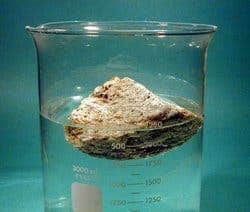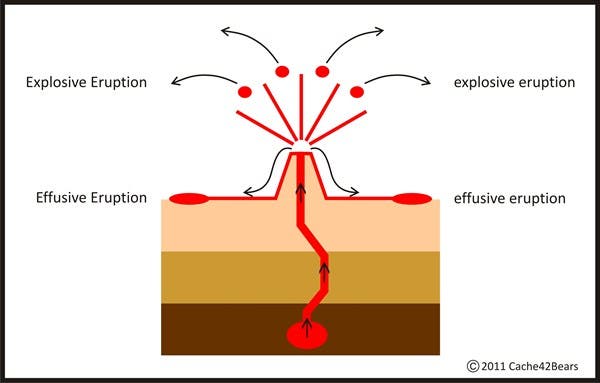The general classification splits volcanic eruptions in two: explosive or effusive. An explosive eruption is, well, explosive and violent (think Mount Helens), while an effusive eruption is associated with lava flows (think Hawaii). However, in a new study conducted by New Zealand and UK researchers described another, new type of eruption.
Inside volcanoes, magma often has dissolved gases as a function of the very high pressures and chemistry of the magma. Much in the same way you open a carbonated drink – when you take the lid off, the bubbles burst out – when magma erupts as lava, the pressure is relieved and the gases exsolve (the opposite of dissolve). In explosive eruptions, this phenomena is so strong that it fragments the lava, violently ejecting it, along with anything caught along. When this happens, the ejected lava expands so quickly the resulting rock cools and degasses to form solidified pumice that can be sufficiently light to float on water.
After studying the Macauley volcano in the Pacific Ocean however, volcanologists found an entirely different story.
“By documenting the shape and density of bubbles in pumices generated by an underwater caldera volcano in the southwest Pacific Ocean – the Macauley volcano – we found large differences in the number and shape of “bubbles” in the same pebble-sized samples, different to anything previously documented,” said co-author Ian Wright, from U.K.’s National Oceanography Centre. “This range of bubble densities distinct in these pumice samples indicates that the lava erupting from the caldera was neither vigorous enough for an explosive eruption, nor gentle enough for an effusive flow,” Wright said in a statement.

In oceans, when pumice is located, it generally represents the spot of a volcanic eruption – an explosive eruption. The mechanism proposed for this special type of pumice though is more complicated; it suggests that rather exploding in the neck of the volcano, the formation and expansion of bubbles in the magma created a buoyant foam, rising to the seafloor and then buoyantly detaching itself from the volcano as molten pumice, but with cooler margins. The vesicles within the molten interior would have continued to expand as the pressure – this time from the weight of the seawater – reduced.
“These processes explain the unique bubble structure seen in the samples analysed, which could have only occurred with an intermediate eruption style and in an underwater setting,” said Professor Wright. “We conclude that the presence of widespread deposits of pumice on underwater volcanoes does not necessarily indicate large-scale explosive volcanism.”
The authors proposed that this type of eruption be named Tangaroan, the Maori god of the sea, and name of the research vessel used to collect the samples.







